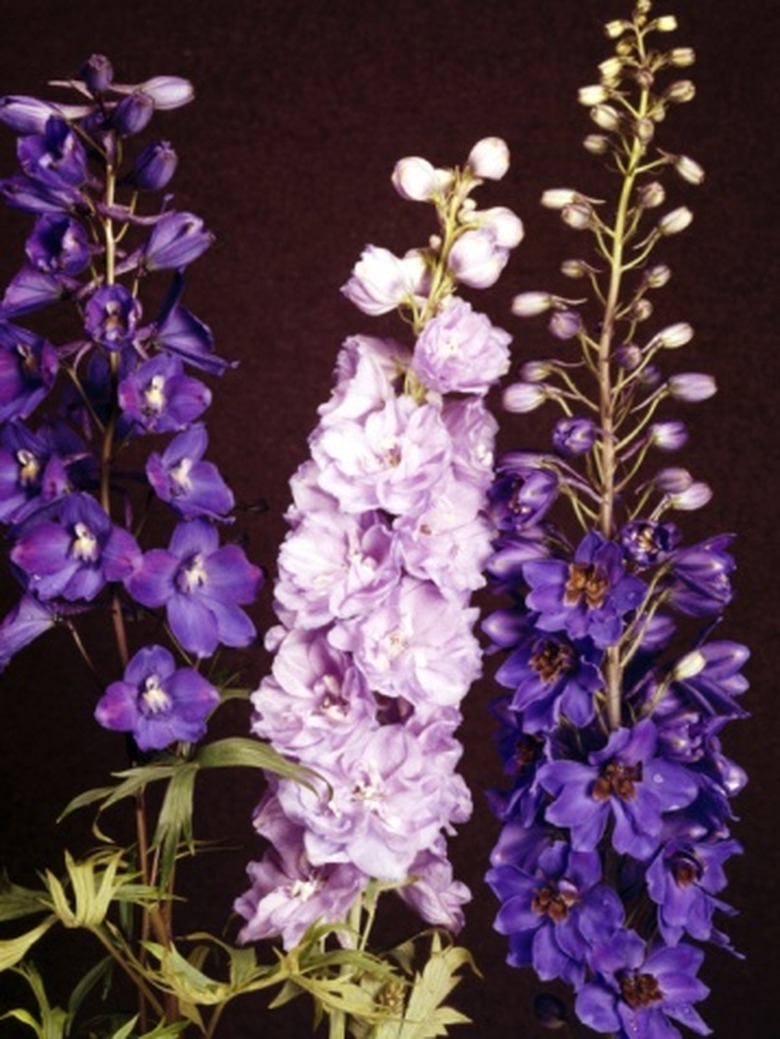How To Prune Delphinium
Things Needed
- Gloves
- Bypass shears
The genus Delphinium contains nearly 300 species of flowering plants found in cool, temperate environments around the world. Many cultivated varieties of Delphinium go by the common name larkspur, which refers to the unusual spur-shaped protrusion on the back of each violet-blue blossom. The 4- to 6-foot-tall flower stalks emerge in early summer and quickly fade, but the blooming period can be significantly prolonged if the plants are pruned immediately after the first bloom. Pruning Delphinium is a simple task, but precautions must be taken because all parts of the plant are toxic to humans.
Step 1
Put on gloves before handling or working with Delphinium plants, which contain toxic alkaloids that cause severe skin irritation and gastrointestinal problems and convulsions or paralysis if ingested.
Step 2
Grasp the spent flower stalk of the Delphinium to steady it. Reach into the center of the foliage and sever the spent flower stalk at the base, using bypass shears. Discard the flower stalk in a green waste bin rather than composting it.
- The genus Delphinium contains nearly 300 species of flowering plants found in cool, temperate environments around the world.
- The 4- to 6-foot-tall flower stalks emerge in early summer and quickly fade, but the blooming period can be significantly prolonged if the plants are pruned immediately after the first bloom.
Step 3
Trim away yellow leaves as they appear during the growing season, using bypass shears. Snip the leaves away at the base. Discard the yellowed leaves in a green waste bin.
Step 4
Continue removing the spent flowering stalks during the summer to prompt renewed flowering. Leave the last set of flowers in fall to dry out and produce seed, if desired. Cut off the stalk after the seeds have been gathered.
Step 5
Cut away all the leaves within 2 inches of the ground in autumn to help the Delphinium overwinter with minimal damage.
- Trim away yellow leaves as they appear during the growing season, using bypass shears.
- Cut away all the leaves within 2 inches of the ground in autumn to help the Delphinium overwinter with minimal damage.
Tip
Allow only one Delphinium stalk to go to seed during the first year of growth to help the plant put its energy toward root production. Increase the number of seed stalks by one each year, if desired.
Warning
Wash your hands, arms and clothing thoroughly after working with Delphinium plants. Avoid getting the sap in your mouth or eyes since it can be fatal in large amounts.
